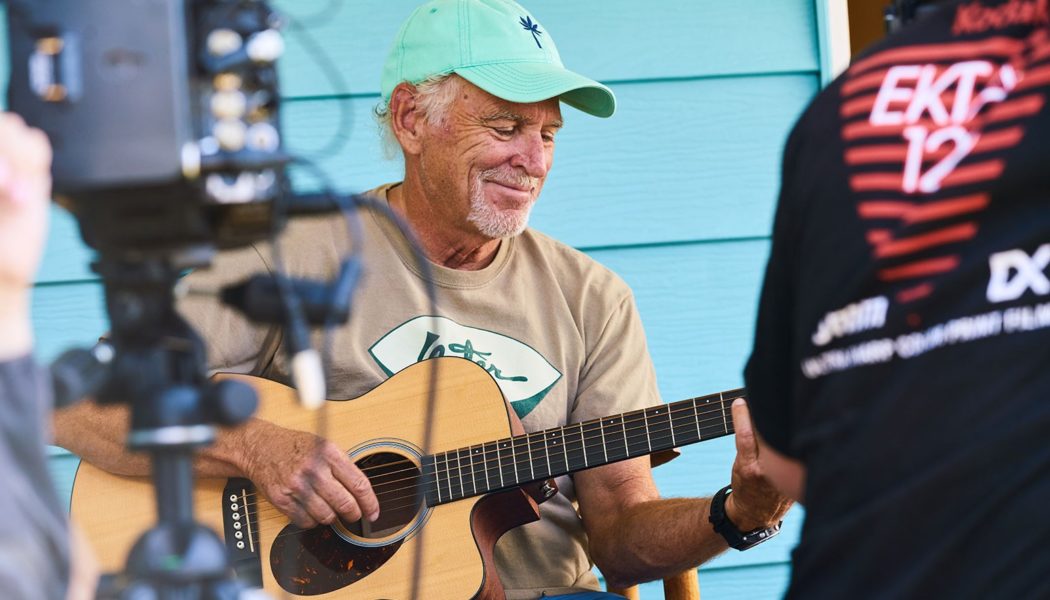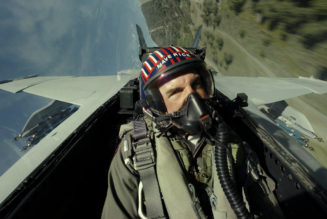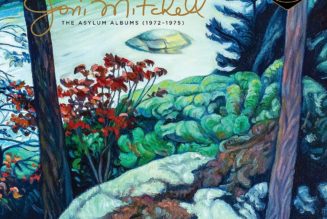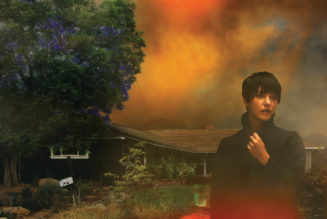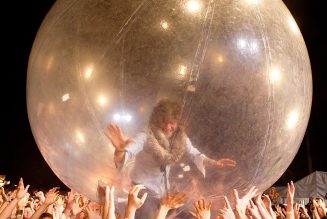
In addition to such artists as Buffett, The Police’s Sting and Andy Summers, Dire Straits’ Mark Knopfler, Duran Duran’s Nick Rhodes and Earth, Wind & Fire’s Verdine White, plus Martin and his son Giles, the documentary includes interviews with studio staffers, including Desmond the bartender and George the chef, whose stories provide a continuous thread to not only the studio, but the island.
For some artists like The Police, Montserrat provided a chance to escape as their careers exploded. Though, as Summers notes in the film, all three members started divorce proceedings while recording Ghost in the Machine and the band went through periods of not speaking to each other until Martin intervened. For others, like Lou Reed and Rhodes, the location was too remote and pastoral to provide the energy they needed.
No album recorded at Montserrat captured the vibe so much as Buffett’s 1979 set, Volcano, which takes its name and title track from Buffett’s experiences there. The cover artwork is a painting, perhaps prophetic, of the green island with the Soufrière Hill volcano spewing smoke in the background.
Buffett, who was the second artist to record in the studio, tells Billboard that Martin, whom he and his producer Norbert Putnam met in London while recording a live album, “was one of the most charming characters. He didn’t have to hard-sell me at all about Montserrat.”
But just as intrigued as he was by the new studio and Martin, the real appeal was proximity and transportation. “By that time I was pretty well-established on St. Bart’s,” he says. “I had never been able to sail to work on my boat and I thought that alone was worth going to Montserrat for.”
He and his band set up there for three weeks and the album’s title track came very quickly. “We were all living in houses around there and [songwriter/band member] Keith Sykes came up to the house,” Buffett says. “We were working on other songs we had started back in the States and Keith was looking out the window and sang the line, ‘I don’t know/ I don’t know/ I don’t know where I’m a gonna go/ When the volcano blow.’ I said, ‘What did you just say?’ That night we wrote it and cut it the next day.” The song is a staple in Buffett’s live show to this day, as is the other hit from the set, “Fins.”
Buffett remembers the entire episode as charmed — even if the power would occasionally go out in the middle of a take or the studio keepers’ stiff British upper lips and rules occasionally clashed with Buffett and band’s more low-key approach. Buffett wanted to bring in some local players to appear on the record, which he know would be frowned upon, so he waited until the day the studio manager went fishing to sneak them in.
In stories that sound almost apocryphal, Buffett remembers asking the locals about a steel pan player to play on Volcano. The good news, a local told Buffett, was that there was a musician from Trinidad on the island. “‘The bad news is he’s hiding out in the jungle because he’s on the run,’” Buffett recalls being told. “He said, ‘I think he was in a coup d’etat in Trinidad, so he’s hiding out here.’ We made a deal. Jackie Dangler was his name. He appeared out of the jungle and played on the record and went back in.”
In another story that didn’t make the documentary, Buffett went back to Montserrat a few years later to possibly interest Martin in using a helicopter service Buffett was helping some friends in St. Maarten get off the ground. Buffett flew in and landed at the studio, interrupting a studio session with Clapton, Phil Collins and famed studio musicians Duck Dunn and Steve Cropper, and went to lunch with Martin. “We got into the helicopter to leave and I saw police cars coming up the hill to the studio,” Buffett recalls. “A few months later, I ran into Duck Dunn and he told me [the police] thought the island was being invaded by drug dealers or there was a coup and the army came out. The people who gave us permission to land didn’t tell the tower, so they thought they were being invaded…but people did start using the helicopter after that.”
The Rolling Stones’ Steel Wheels was the last album recorded at Montserrat in 1989. Later that year, Hurricane Hugo hit, leaving 11,000 of the 12,000 people on the island without their homes, according to the documentary. “We weren’t able to get back to Montserrat for six weeks,” Martin said in an archival interview. “The piano keys were covered in moss.” By 1989, he adds, technology was changing as more artists began using digital technology, making the studio obsolete. Then, in 1995, the volcano erupted, leaving the island looking like a nuclear winter. “You bring something out of nothing and it always goes back to nothing again,” Martin says in the film. But as the documentary attests, the music and stories remain.
“While making the film, we identified thematic veins that we wanted to tap into throughout the narrative. These included themes such as isolation and its impact on creative freedom, the nature of celebrity, nostalgia, and the impermanence of existence,” said director/co-writer Gracie Otto in the film’s notes. “I also intended for the island of Montserrat to be a leading character in and of itself. Its isolation, its starkness, its black sands and its now post-apocalyptic landscape — all of these provide a background to the creation and ultimate destruction of AIR. And of course, the volcano on the island is an ever-present backdrop to the action. It stands as a reminder of the power of nature, and the impermanence of our existence.”

